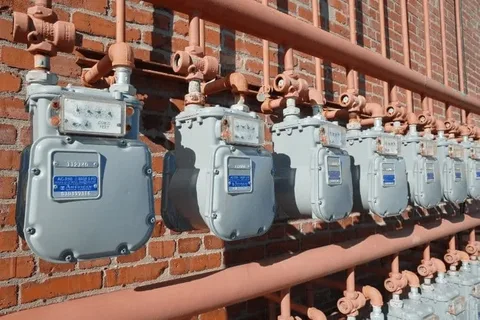Optimizing Engine Health Through Advanced Temperature Monitoring

In modern vehicles, precise engine temperature monitoring is a critical function that ensures optimal performance, longevity, and safety of the powertrain. By keeping key components such as the engine block, coolant system, oil pathways, and exhaust system within their ideal temperature ranges, vehicle systems can reduce wear, prevent failures and maintain efficiency under a variety of operating conditions.
Why Engine Temperature Monitoring Matters
The engine operates under extreme heat and mechanical stress every time the vehicle is in motion. Monitoring temperature allows the engine management system to adjust parameters such as fuel-injection timing, ignition, turbo boost levels and coolant flow to maintain efficient operation. If parts run too hot, you risk thermal damage, reduced lubrication effectiveness, increased emissions or even catastrophic component failure. If they run too cool, fuel efficiency suffers and emissions rise. Real-time thermal data gives the vehicle the ability to dynamically respond and maintain optimal conditions.
Key Technologies and Monitoring Points
Engine temperature monitoring typically involves multiple sensing points and technologies. These include coolant temperature sensors, oil-temperature sensors, cylinder head or block temperature sensors, exhaust-gas temperature sensors and even turbocharger/intercooler thermal sensors in turbo-charged engines. The sensors themselves vary: thermistors, resistance temperature detectors (RTDs), integrated circuit (IC) temperature sensors and sometimes infrared sensors. The data from these sensors flows into the vehicle’s control unit, which interprets it and makes adjustments.
Benefits & Operational Gains
Accurate engine temperature monitoring delivers several tangible benefits:
-
Improved fuel efficiency and emissions: By knowing when the engine is at optimal temperature and adjusting accordingly, fuel burn and emissions can be kept under control.
-
Enhanced durability: Preventing overheating protects gaskets, bearings, seals and other components that degrade more rapidly at elevated temperatures.
-
Predictive maintenance: Monitoring thermal trends enables the detection of anomalies—such as coolant not circulating properly or oil flow being restricted—before they become failures.
-
Better performance: Especially in turbocharged or high-performance applications, temperature data helps protect the engine under load by controlling boost, ignition timing and protecting against knock or detonation.
-
Safety and reliability: Extreme temperatures can lead to risks such as fires, coolant leaks or engine seizure. Proactive monitoring helps mitigate these risks.
Design Considerations & Challenges
Implementing effective engine temperature monitoring involves thoughtful design. Sensor placement is critical—stations need to be located where they accurately reflect the thermal state of relevant components, yet avoid interference or damage from vibration, contamination or thermal shock. The sensors must be durable, calibrated, and able to function in harsh automotive environments (vibration, wide temperature swings, chemicals). Also, the control architecture must manage data from multiple sensors, filter noise, detect faults and integrate smoothly with other vehicle systems such as engine control units (ECUs) or telematics.
Looking Ahead: Trends in Engine Thermal Monitoring
As automotive powertrains evolve (including electrified, hybrid and high-performance systems), engine (or powertrain) temperature monitoring is also advancing:
-
Multi-sensor networks & data analytics: Vehicles deploy more temperature sensors than ever before. By analysing trends and correlations among different sensing points, systems can detect subtle issues early.
-
Integration with vehicle connectivity: Engine-thermal data can feed remote diagnostics or fleet-management systems to schedule maintenance and reduce downtime.
-
Miniaturised, higher-precision sensors: New sensor technologies with better accuracy, smaller size, lower cost and improved durability enable broader deployment across vehicle systems.
-
Adaptive control strategies: Thermal data is increasingly used to control not just engine parameters but also cooling system behaviour, fan operation, electric pump flows and even predictive strategies under anticipated drive conditions.
-
Software-defined engines: As vehicles become more software-centric, the engine control system can use real-time thermal data to dynamically optimise performance, emissions and durability across a much wider range of operating conditions.
FAQs
1. What exactly does engine temperature monitoring measure?
It involves sensing the temperature of critical engine components—such as coolant, oil, cylinder head or exhaust gas—to ensure those components operate within safe and efficient thermal ranges. The data is used by the engine control system to manage performance, durability and emissions.
2. Why is it important to monitor engine temperature, not just rely on gauges?
The small temperature gauge on the dashboard provides a general overview for the driver, but modern engine systems require far more precise and numerous sensing points. Without detailed thermal monitoring, components can overheat, degrade prematurely, or the engine might run inefficiently under varying loads and environmental conditions.
3. Can monitoring engine temperature help with maintenance and longevity?
Yes. When a system monitors multiple thermal sensors and analyses trends—such as coolant not reaching optimal temperature, or oil temperature staying high—it can flag potential problems early. This allows for maintenance before a failure occurs, improving reliability, extending component life and potentially reducing repair costs.
More Related Report
Automotive Fuel Filter Market Size
Automotive Radar Sensors Market Size

